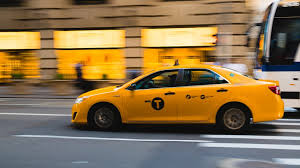
Wednesday, the New York City Council will vote on Intro 144-B, which would cap the number of ridesharing cars in the city, along with other regulations.
The legislation creates a “vehicle utilization standard”, which combines factors like distance traveled, time, and number of passengers, and “other factors as the commission deems appropriate”, to judge how much a ride-hail car is being used.
The measure requires companies turn over a great deal of data to the city to enable this.
Where the rubber meets the road: the city’s Taxi and Limousine Commission will use this standard to regulate ridesharing cars, and it leaves their power open ended on what factors they can add.
Yes, it’s supposedly based on the outcome of the city’s study, but it would be quite the shocker if that analysis said government should do nothing at all.
The bill will give the city the ability to go beyond an overall cap on cars. It will empower bureaucrats to control how many cars are allowed by region, time, car type, and more.
The City Council will likely pass this expansive measure in the name of studying the impact of Uber, Lyft, and Via, especially when it comes to traffic congestion.
Never mind that this issue was already studied, at a taxpayer expense of $2 million.
When Mayor de Blasio was pushing for a cap in 2015. he commissioned an analysis from McKinsey & Co. Along with heavy redactions when made public, the report was not able to pin the blame for congestion on Uber and company.
A SUNY-Purchase professor points out in a New York Times op-ed: “From 2009 (before ride hailing) through 2015, the study finds that reductions in vehicular speeds began long before ride hailing hit the stage, and the pattern did not change after ride hailing.”
Recently, it may have been made worse by added tourist foot traffic, not to mention Times Square being practically walled off for crosstown traffic.
Most notably, state leaders, notably Governor Cuomo, along with city leadership, have failed to manage the MTA and subways responsibly.
New York City’s subway system has become so bad when it comes to reliability and speed that ridership has dropped even though population has grown. That is a government failure and recipe for disaster.
The MTA has managed to let this happen despite massive budgets rising over $16 billion annually for operating, and over $35 billion for capital projects.
The biggest pressure point for the council in pushing a cap on ride-hails is taxi companies, and medallion owners.
Yet, it is city government that implemented the policies that knee-capped cabs when it came time to compete.
For decades, the city had an unmoving cap on the number of cabs through the medallion system. Even before Uber, this was a raw deal for many cab drivers who were forced to pay exorbitant prices to get a medallion, or even to just borrow one from someone who hoarded them.
It was a government created cartel that led to taxi kingpins and exploitation of drivers.
Once ridesharing exploded in popularity, the taxi system was in no shape to compete in an actual market. Their only recourse is to compete through backroom City Hall wheeling and dealing.
Incredibly, ridesharing companies reportedly offered $100 million for a fund to bailout cab drivers who are struggling because of these government policy failures.
Uber and Lyft were ready to pay for a problem they did not create, but merely exposed. That wasn’t good enough for the Council Speaker though.
Also of no concern to the politicians gunning for a cap, minority community groups worried that outerboroughs will go back to being underserved and that minorities will struggle trying to find and hail taxis again.
A state attorney general candidate even threatened to sue over the cap if elected.
The entire reason ridesharing surpassed taxis in New York City was because they served a market in outerboroughs (Queens, Brooklyn, the Bronx) that was largely ignored. Though to be fair, the cap on taxis made it next-to-impossible for them to effectively cover the entire city.
Now, after ridesharing fixed this problem, the Council will risk recreating it, and the offer to make up for this from Council Speaker Corey Johnson was to hire more bureaucrats to watch the issue.
Interesting final note: Wheelchair accessible vehicles are not covered by the cap. They can still get a for-hire vehicle (FHV) license like before.
This messy example of how to make consumers and taxpayers pay for decades of government mistakes should not be followed outside New York.

